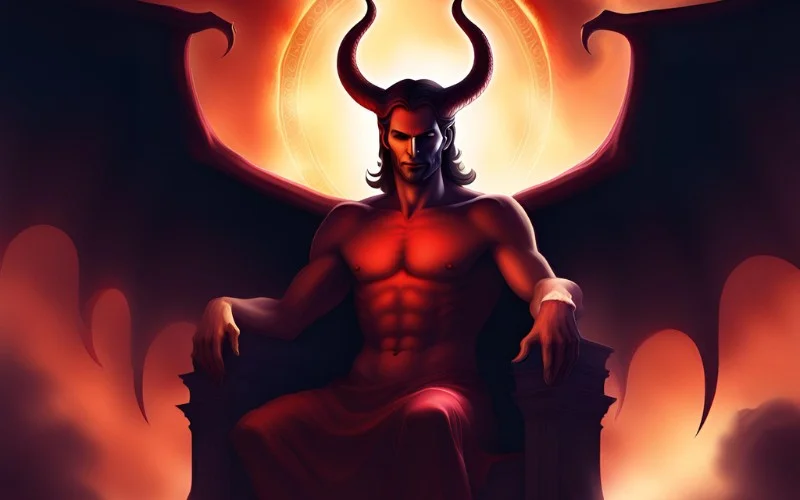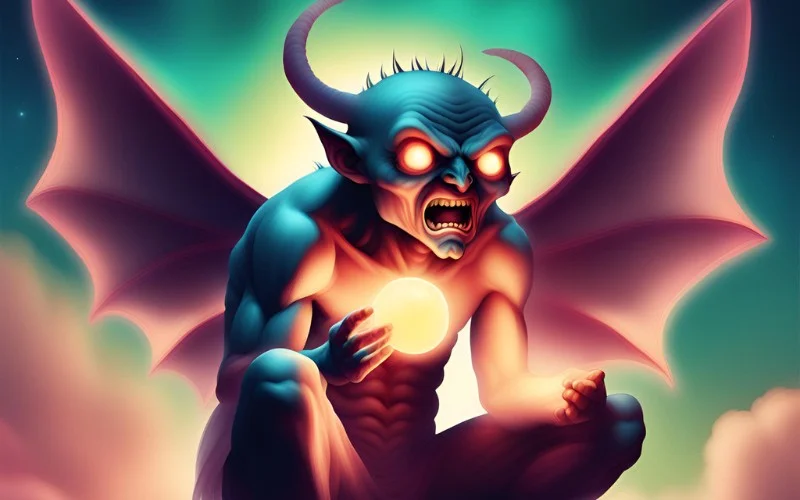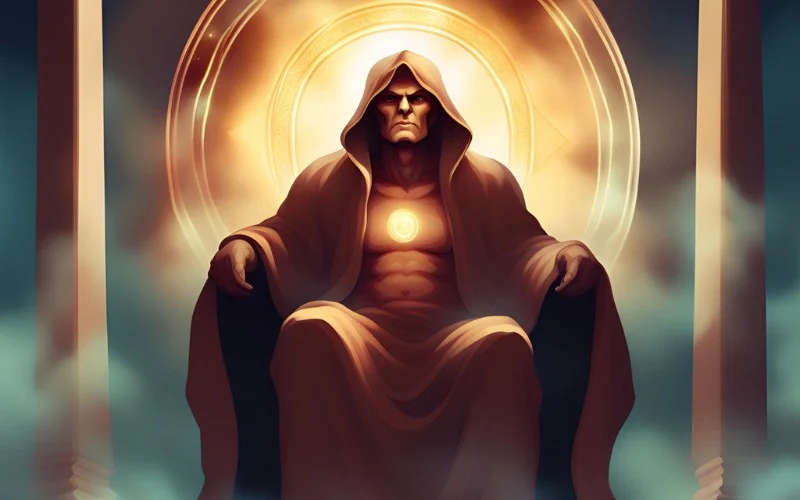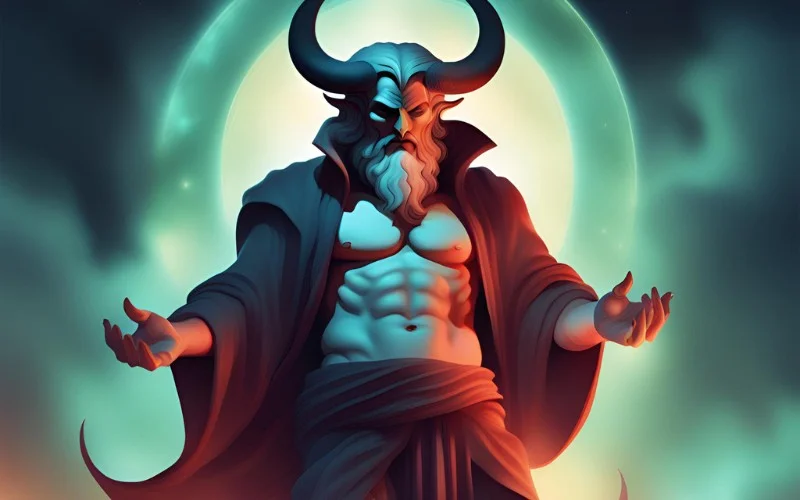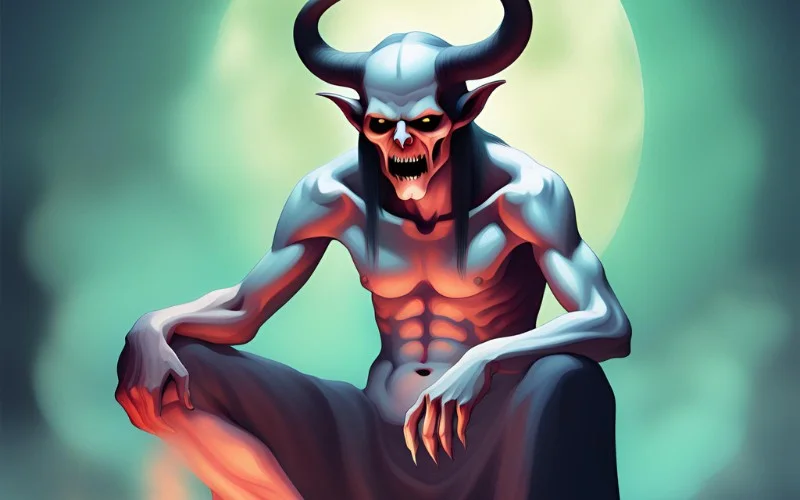Imagine encountering the seven princes of Hell, each embodying a cardinal sin and wielding immense power in the underworld. You’ve probably heard of Lucifer, the epitome of pride, but what about Beelzebub or Mammon?
These entities don’t just exist in myth—they represent real temptations that can ensnare anyone. Understanding their roles and influences can reveal much about human nature and the pitfalls of vice.
Are you curious about how each prince manipulates their domain? Let’s explore the depths of their influence and uncover the truths behind these sinister figures.
Key Takeaways
- Lucifer is the first prince of Hell, embodying pride and leading all demons.
- Beelzebub, symbolized by flies, represents gluttony and is the second most powerful demon.
- Mammon seduces with wealth and embodies the sin of greed.
- Asmodeus manipulates carnal urges and represents the sin of lust.
- Leviathan punishes envy and acts as a gateway to Hell.
Lucifer
Lucifer, the first prince of Hell, embodies the sin of pride after being cast out of heaven for believing in his superiority over God. This overbearing pride led to his downfall, which led him to challenge divine authority.
His charm and charisma convinced other angels to join his rebellion, showcasing the depth of his influence even before his fall.
As the leader of all demons, Lucifer’s sin of pride didn’t just end with his expulsion from heaven. It continued to define his actions and relationships, including his marriage to Lilith, the supreme empress of Hell.
Together, they rule with an iron fist, their partnership symbolizing a union of formidable powers in the underworld.
Lucifer’s pride also manifests in his interactions with humanity. During the Middle Ages, he was often linked to witchcraft and accused of whispering into the ears of Christians, sowing seeds of doubt and rebellion.
Despite his fall from grace, Lucifer’s influence as the prince of Hell remains potent. His story is a stark reminder of the dangers of unchecked pride and the far-reaching consequences that can arise from believing oneself above all others.
Beelzebub
While Lucifer’s pride defines his reign, Beelzebub’s gluttony shapes his terrifying role as the Relentless Devourer in Hell. As the second most powerful demon among the seven princes of Hell, Beelzebub wields immense influence and terror.
Associated with the sin of gluttony, he doesn’t just consume; he obliterates without end. His dominion is a nightmarish territory where souls suffer under relentless swarms of flies, symbolizing his insatiable hunger.
Originally, Beelzebub was connected to an ancient Semitic God of fertility, but over centuries, he morphed into a monstrous figure of demonology.
His transformation into a symbol of gluttony and decay marks a dramatic shift from life-giving to life-destroying. This duality underscores his terrifying power and the breadth of his influence.
Consider these key aspects of Beelzebub’s role:
| Aspect | Description | Significance |
|---|---|---|
| Power | Second only to Lucifer | Commands great authority |
| Sin | Gluttony | Embodies endless consumption |
| Torment | Clouds of flies | Inflicts relentless suffering |
Beelzebub’s relentless nature makes him a fearsome figure among the seven princes of Hell. He embodies the ultimate in destructive gluttony.
Mammon
Mammon, the demon prince of greed, embodies the corrupting allure of material wealth. His name means ‘money,’ representing the insatiable desire for riches. Among the demons of hell, Mammon stands out as a figure who seduces mortals with the promise of endless wealth and luxury.
Mammon built a magnificent gold-filled palace in Hell, symbolizing his dominion over those who worship at the altar of wealth. This palace isn’t just a structure; it reflects the power and danger of avarice. The gleaming gold constantly reminds one how easily one can become trapped by greed.
You might recall that Jesus warned against worshiping Mammon, highlighting the difficult path it leads you down. When you prioritize money over all else, you risk falling into Mammon’s trap, becoming yet another soul consumed by the demons of hell. Mammon’s influence remains as potent and destructive as ever in a wealth-obsessed world.
Asmodeus
Just as Mammon ensnares with the allure of wealth, Asmodeus captivates with the power of forbidden desire. Known as the Prince of Lust, Asmodeus drives individuals toward the sin of lust, alienating them from divine salvation.
He’s often depicted with three heads—human, ram, and bull—symbolizing his multifaceted nature and immense power. Riding an infernal dragon, he embodies both terror and temptation.
In certain mythologies, Asmodius fell in love with a woman named Sarah. This tale highlights his potent influence over human passion and desire.
Yet, his downfall came when Archangel Gabriel bound him after Tobias tricked him in the Book of Tobit. This story underscores his vulnerability to divine intervention despite his formidable nature.
Asmodeus excels at using carnal urges to wreak havoc. By manipulating desires, he leads individuals into actions steeped in the sin of lust, distancing them from spiritual purity. His influence is pervasive, making him a significant force in the world of temptation.
As you explore the stories and symbols associated with Asmodeus, you’ll understand his profound impact on human weakness and vice.
Leviathan
How does Leviathan, the Prince of Hell, embody the sin of envy and wreak havoc upon those consumed by it? As the personification of one of the seven deadly sins, Leviathan’s connection to envy is profound and terrifying.
This monstrous guardian of Hell’s gates punishes the envious by devouring them whole, a fitting fate for those whose jealousy has led them astray. Leviathan’s role isn’t just limited to punishment. He also acts as a living gateway to Hell, often depicted with his gaping mouth serving as the entrance.
His very existence is a constant reminder of the destructive power of this sin. In various artworks, Leviathan appears as a fearsome sea monster, symbolizing envy’s deep, all-consuming nature.
Those who fall prey to this deadly sin find themselves trapped by Leviathan’s relentless grip. The envious are eternally tormented, their souls trapped in the abyss, consumed and consumed again.
Belphegor
Belphegor, the Prince of Hell, embodies the sin of sloth with a deceptive and manipulative nature that lures individuals into spiritual and physical lethargy.
Known for representing one of the seven deadly sins, Belphegor tempts you with promises of wealth and ease, only to cruelly snatch it away, leaving you in despair. His cunning nature allows him to assume any form to achieve his goals, making him a master of deceit.
When dealing with Belphegor, you’re often misled into thinking that success and prosperity can come without effort. This demon thrives on your laziness, pushing you further into a stagnant life without motivation.
In some depictions, Belphegor’s offerings are made from his feces, a grotesque symbol of the degradation and filth that comes with sloth. Such imagery drives home the corrupting influence he exerts over those he ensnares.
Belphegor’s ultimate goal is to lure you into spiritual and physical lethargy, halting your progress and growth. By exploiting the sin of sloth, one of the seven cardinal sins, he ensures you remain trapped in a cycle of inertia and decay.
Astaroth
Astaroth, another formidable Prince of Hell, entices you with promises of knowledge and fulfillment of your deepest desires. Known for his commanding presence, he seduces individuals by offering answers to their most pressing questions.
Astaroth’s allure lies in his ability to provide enlightenment, making him a tempting figure for those seeking wisdom. Astaroth embodies the sin of sloth, influencing you to indulge in idleness and self-gratification, steering you away from productivity and growth.
As one of the prominent Princes of Hell, Astaroth leads legions of demons, wielding significant power and influence. His role isn’t just to tempt but to trap, making you complacent and dependent on his promises.
By exploiting your desires for knowledge and fulfillment, he traps you in a cycle of sin, where the pursuit of easy answers and indulgence becomes your downfall. Beware of Astaroth’s seductive promises; they’re merely a path to deeper enslavement within the dominions of Hell.
Conclusion
In recognizing the 7 Princes of Hell, you see how each sin can pull you into a dark abyss. Lucifer’s pride, Beelzebub’s gluttony, Mammon’s greed, Asmodius’s lust, Leviathan’s envy, Belphegor’s sloth, and Astaroth’s wrath are traps you must avoid.
The allure is strong, but your awareness is stronger. Resist their temptations, and you’ll keep your soul from the eternal damnation they promise. Stay vigilant, and choose righteousness over ruin.
Explore More Articles:
Did Adam and Eve Go to Heaven? Unveiling Biblical Insights
Bloom Where You Are Planted: Thriving in Any Environment
Palm Sunday Customs: How Different Countries Celebrate

